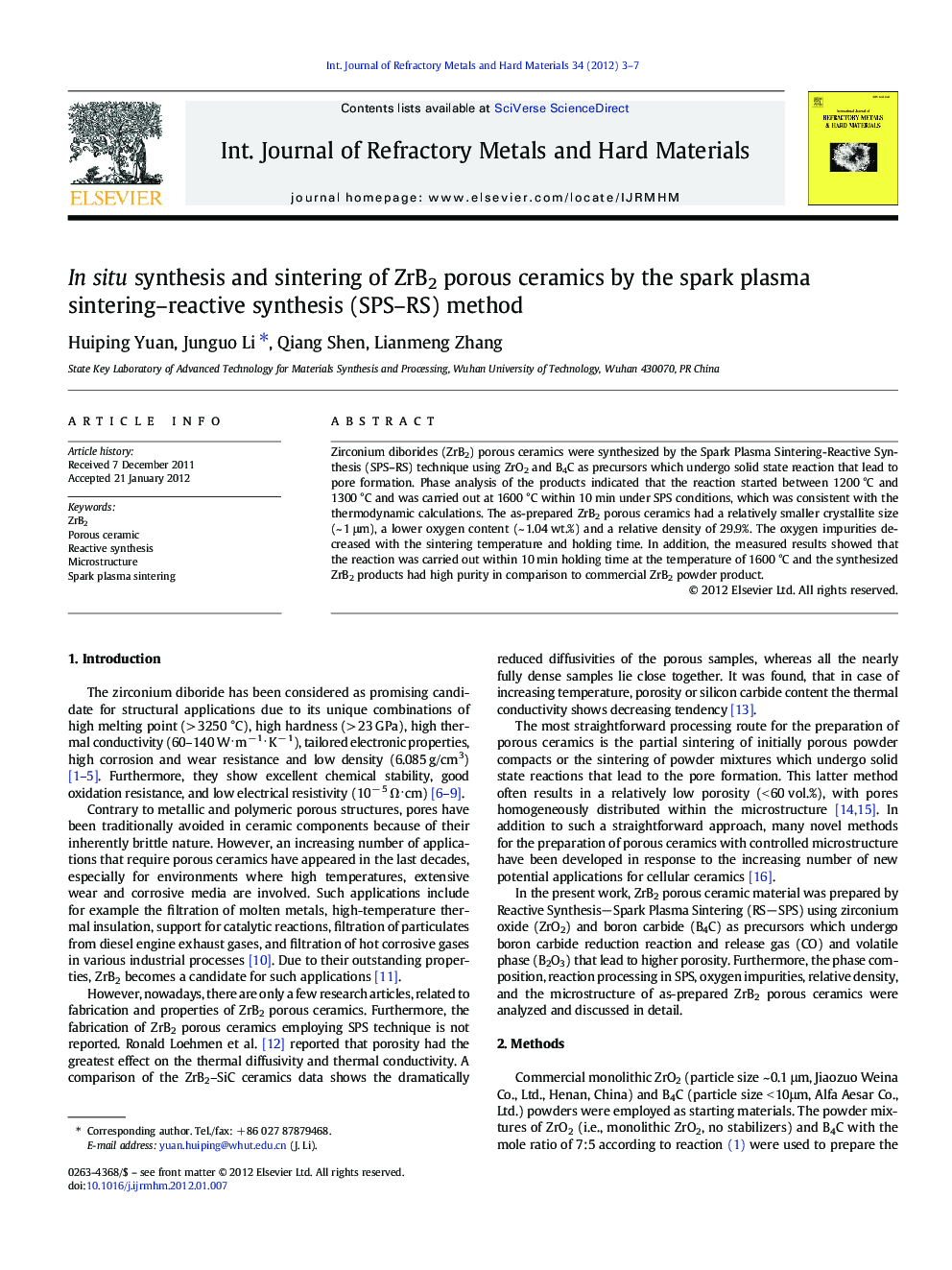| Article ID | Journal | Published Year | Pages | File Type |
|---|---|---|---|---|
| 1603785 | International Journal of Refractory Metals and Hard Materials | 2012 | 5 Pages |
Zirconium diborides (ZrB2) porous ceramics were synthesized by the Spark Plasma Sintering-Reactive Synthesis (SPS–RS) technique using ZrO2 and B4C as precursors which undergo solid state reaction that lead to pore formation. Phase analysis of the products indicated that the reaction started between 1200 °C and 1300 °C and was carried out at 1600 °C within 10 min under SPS conditions, which was consistent with the thermodynamic calculations. The as-prepared ZrB2 porous ceramics had a relatively smaller crystallite size (~ 1 μm), a lower oxygen content (~ 1.04 wt.%) and a relative density of 29.9%. The oxygen impurities decreased with the sintering temperature and holding time. In addition, the measured results showed that the reaction was carried out within 10 min holding time at the temperature of 1600 °C and the synthesized ZrB2 products had high purity in comparison to commercial ZrB2 powder product.
► Porous ZrB2 ceramic was first synthesized by Spark Plasma Sintering. ► Relative density of ZrB2 ceramic is 29.9% with a mean grain size of 1 μm. ► Oxygen impurity of synthesized ZrB2 porous ceramic is 1.04 wt.%. ► Thermodynamic calculation was used to analyze reaction temperature. ► Stability of B2O3 was discussed explaining reaction processing.
